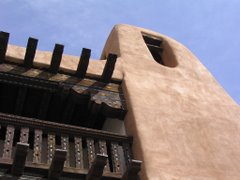Space Weather News for Dec. 20, 2007
http://spaceweather.com
URSID METEORS: Earth is heading for a stream of comet dust that could produce a pleasing outburst of "shooting stars" this weekend. Forecasters say dozens of meteors per hour could emerge from a spot in the sky near the North Star (Polaris) when Earth encounters the dust on Saturday evening, Dec. 22nd. These meteors are called "Ursids" after Ursa Minor, the constellation where the North Star is located. If forecasting models are correct, the shower's peak will occur between 2100 and 2200 UT (4-5 pm EST) with meteors visible as much as four hours before and after that time.
The source of the dust is Comet 8P/Tuttle, which is traveling through the inner solar system this month and next. The comet itself can be seen through binoculars not far from the radiant of the shower. This gives sky watchers a rare opportunity to see a comet and its meteors in the same observing session.
Ursid meteors, which appear in small numbers annually, have a reputation for faintness and delicacy. Dark skies are usually required to see them; bright moonlight on Dec. 22nd will only exacerbate the problem of visibility. However, say forecasters, during an outburst of Ursids there may be a fair number of bright meteors. No one knows what will happen--all the more reason to look!
Visit http://spaceweather.com for sky maps and more information.
Looking for an out-of-this-world Christmas gift? Try Spaceweather PHONE: http://spaceweatherphone.com
Saturday, December 22, 2007
Subscribe to:
Post Comments (Atom)

No comments:
Post a Comment